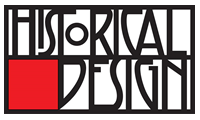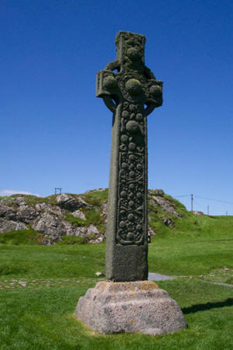Product Description
Sydney Pitcher “St. Martin’s Cross Iona” Arts & Crafts photograph c. 1900


SYDNEY PITCHER F.R.P.S. (d. 1950) England
ARTHUR H. PITCHER (Framer)
“St. Martin’s Cross Iona” c.1900
Carbon process photograph, hand carved oak frame with beautiful wood grain detail.
Marks: S MARTINS CROSS IONA (carved incised mark)
Art Nouveau paper label (on back): Framed by Arthur H. Pitcher, College Court, Gloucester, Moulding No…..
Photograph: H: 9 1/2″ x W: 5″
Frame: H: 16 3/4″ x W: 8 5/8″ D: 5/8″
Sydney A. Pitcher FRPS (active 1904-1939) was a photographer with an interest in monument and church architecture. He is listed in the 1927 Kelly’s Directory of the County of Gloucester as a commercial photographer, publisher and picture frame maker, operating from 5 & 7 College Court, Gloucester. Pitcher was involved primarily in the photography of Gloucestershire churches, but also took pictures of churches and cathedrals in neighbouring counties, and of medieval sculptures at Winchester College. He collaborated on the publication of Rushforth’s series of volumes The stained glass of Great Malvern Priory Church , Gloucester, 1916-1927.
He joined the Royal Photographic Society in 1904, was admitted as an Associate member in 1925, and became a Fellow in 1928.
Sydney Pitcher “St. Martin’s Cross Iona” Arts & Crafts photograph c. 1900
KARL KOEPPING attr. (1848-1914) Germany
GROSSHERZOGLICHE SAECHSISCHE FACHSCHULE Weimar, Germany
Tall Pair of Liquor glasses c. 1900
Blown golden yellow glass
H: 8 1/2″
MAURICE BOUVAL (born Toulouse, died 1920) France
M. COLIN France
“Nymph Embracing a Blossom” candle holder c.1900
Silvered cast bronze in the form of a nymph on a leaf embracing a blossom
Marks: M. Bouval (script signature) and COLIN, (Foundry) written above
For other examples of Bouval’s work see: The Paris Salons 1895-1914, Vol. V: Objets d’Art & Metalware, Alastair Duncan (Woodbridge, Suffolk: Antique Collectors’ Club, 1999), p. 127; Ecole to Deco, Small Sculptures from a Private Collection, Stephen C. McGough ed. (Oberlin, Ohio: Allen Memorial Art Museum, 1979) pp. 33-4; Art Nouveau Sculpture, Alastair Duncan (New York: Rizzoli, 1978) pp. 30-1.
H: 3″ x W: 6 1/2″ x D: 4 3/4″
